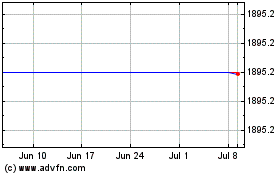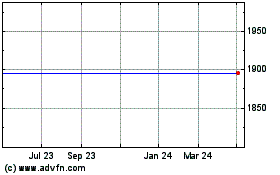By Asa Fitch and Benoit Faucon
After years shunning Iran, Western businesses are bursting
through the country's doors -- but U.S. companies are noticeably
absent.
Dozens of development projects and deals have been hammered out
since Iran's nuclear accord with world powers in 2015 lifted a
range of sanctions. Among them, France's Peugeot and Renault SA are
building cars. The U.K.'s Vodafone Group PLC is teaming up with an
Iranian firm to build up network infrastructure. Major oil
companies including Royal Dutch Shell PLC have signed provisional
agreements to develop energy resources. And infrastructure giants,
including Germany's Siemens AG, have entered into agreements for
large projects.
Chicago-based Boeing Co. last year got the go-ahead to sell 80
aircraft valued at $16.6 billion to Iran. But for the most part,
deals involving U.S. businesses are few and far between.
Two of the world's biggest auto makers, Ford Motor Co. and
General Motors Co., have steered clear of Iran since the nuclear
accord. A Ford spokeswoman said the company was complying with U.S.
law and didn't have any business with Iran. GM is focusing "on
other markets, and other opportunities," spokesman Tony Cervone
said.
Peugeot has taken notice. Its Middle East chief, Jean-Christophe
Quémard, said Peugeot's early entry has left U.S. rivals in the
dust. "This is our opportunity to accelerate," he said last
month.
U.S. companies are at risk of losing lucrative deals to early
movers into a promising market of 80 million people, analysts say,
setting off skirmishes among European and Asian companies eager to
gain an edge on more-cautious U.S. competitors. But as latecomers,
U.S. companies likely won't face a learning curve in dealing with
the political risks and the bureaucratic difficulties in Iran.
Apple Inc. explored entering the country after the Obama
administration allowed the export of personal-communications
devices in 2013, according to people familiar with the matter. But
the company decided against it because of banking and legal
problems, the people said. Apple declined to comment.
U.S. companies usually need special permission from the Treasury
Department to do business with Iran. Further complicating matters
for U.S. companies: President Donald Trump during his campaign
threatened to rip up Iran's nuclear deal, and he hit the country
with new sanctions shortly after taking office. On Sunday, Iran
imposed its own sanctions on 15 U.S. companies, mainly defense
firms.
The nuclear deal removed a range of U.S., European Union and
United Nations sanctions in 2016 that had held back Iranian energy
exports and put the brakes on foreign investment. In exchange,
Tehran agreed to curbs on its nuclear program. But while food,
medicine and agricultural products are exempted from U.S.
restrictions, U.S. products are available in Iran often only
through foreign subsidiaries or third-party importers.
Peugeot, officially known as Groupe PSA SA, is aiming to hit
annual production of 200,000 cars in Iran by next year in
conjunction with its partner Iran Khodro, after the two signed a
EUR400 million ($432 million) joint-venture agreement in June.
Already, the pace of both Peugeot's and Renault's car sales in Iran
has more than doubled. In February, Renault sold 15,230 vehicles in
Iran, up 175% from a year earlier.
Asian companies, mainly Chinese ones, have had a growing
presence in Iran even as the country was under sanctions. Some have
stepped up activities since the nuclear deal, including China
National Petroleum Corp., which joined France's Total SA in a
preliminary agreement to develop a major Iranian gas field in
November.
On a recent visit in Tehran's biggest hotels, lobbies were full
of foreigners huddling with prospective Iranian partners. A packed
automotive conference in February drew top executives from Peugeot,
Renault and Citroën. The same day, the Swedish prime minister was
visiting a Scania truck factory west of the capital after the
company's deal to supply Iran with 1,350 buses.
Iran has caught the attention of a broad spectrum of investors
beyond autos, with foreign companies selling everything from
gas-powered turbines to mining technologies in the country.
Government-approved foreign direct investment shot up to more
than $11 billion last year, official figures show, from $1.26
billion in 2015. Pedram Soltani, the vice president of Iran's
Chamber of Commerce, said more than 200 foreign business
delegations have visited Iran since the nuclear deal took
effect.
"We see what's happening in the U.S. and Mr. Trump's comments,"
said Ghadir Ghiafe, an Iranian steel-industry executive who is
exploring partnerships with South American and European companies.
"Our businessmen don't pay much attention to it."
Foreign companies still face daunting obstacles to doing
business in Iran. Iran placed 131st out of 176 countries for
corruption in a ranking by Transparency International last year. It
also has major economic problems, including high unemployment and a
banking system saddled with bad loans.
Large international banks remain reluctant to re-establish links
with Iran despite the nuclear deal. That reluctance has made
transfers of money into and out of Iran a challenge.
Western banks such as Standard Chartered PLC, BNP Paribas SA and
Credit Suisse Group AG have generally refused to handle
transactions to Iran for fear of being fined for running afoul of
banking sanctions that remain. Chinese and smaller European banks
have attempted to step into the breach, even though many companies
remain concerned about the regulatory environment.
Some smaller European asset managers have teamed with partners
in Iran to launch stock and private-equity funds pitched to foreign
investors. Charlemagne Capital, for example, a U.K.-based manager
that specializes in emerging and frontier markets, joined Iran's
Turquoise Capital last April to launch Iran-focused funds. American
brokers and asset managers have stayed away from the market,
however.
Some large multinationals -- including infrastructure giants and
major oil companies -- are keeping a close eye on the U.S. and its
new president, in case sanctions snap back into place. Shell, Total
SA and OMV AG of Austria have signed memorandums of understanding
for deals in Iran but have yet to complete terms.
Last month, Total Chief Executive Patrick Pouyanné said the
company would wait for clarity from the Trump administration before
completing a $4.8 billion investment in the country's South Pars
offshore gas field.
But many foreign companies are finding the country's growth hard
to ignore.
The International Monetary Fund recently estimated the economy
grew 7.4% in the first half of the Iranian fiscal year that ended
this month, rebounding from a decline in the previous year.
Meanwhile, a surge in demand has pushed consumer spending in Tehran
to $5,240 per capita so far in 2017, up about 11% compared with
2016, according to Planet Retail, a London research firm.
The upshot is even if there is demand to buy American, much of
Iran's market is left to European and Asian companies.
"The market is now more diverse with Chinese cars and we realize
how important it is to have satisfied customers," said Mohsen
Karimi, a sales manager at Iran Khodro, a domestic auto
manufacturer that has a partnership with Peugeot. Khodro had sold
out its stock of cars this past year, and was now behind delivery
targets for advance sales, Mr. Karimi added.
Like many Tehran residents, Alireza Aniseh wanted his first car
to stand out in a streetscape filled with boxy Iranian models. The
24-year-old said he is leaning toward buying a Toyota Corolla or
Camry, but his dream is owning a Ford Focus.
"Who doesn't love American cars?" he said.
--Aresu Eqbali contributed to this article.
Write to Asa Fitch at asa.fitch@wsj.com and Benoit Faucon at
benoit.faucon@wsj.com
(END) Dow Jones Newswires
March 27, 2017 19:29 ET (23:29 GMT)
Copyright (c) 2017 Dow Jones & Company, Inc.
Shell (LSE:RDSA)
Historical Stock Chart
From Aug 2024 to Sep 2024

Shell (LSE:RDSA)
Historical Stock Chart
From Sep 2023 to Sep 2024
